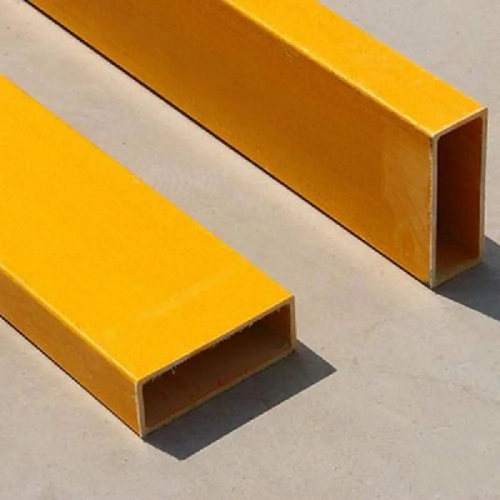FRP pultruded rectangular tube is an equal-section structural profile formed by continuous pultrusion process. Compared with tubes of other materials, it has the following remarkable characteristics:

FRP pultruded rectangular tube
FRP rectangular tube has the characteristics of corrosion resistance, environmental protection, and no pollution: FRP rectangular tube can resist the erosion of acid, alkali, salt, seawater, untreated sewage, corrosive soil or groundwater, and many chemical fluids. FRP tubes have the excellent characteristics of being non-toxic, rust-free, odorless, having no secondary pollution to water quality, and no need for anti-corrosion.
FRP rectangular tube has the characteristics of heat resistance and frost resistance: it still has good toughness and extremely high strength at -30 °C and can be used for a long time in the range of -50 °C-80 °C. The tube can also work at temperatures above 110°C.
FRP rectangular tube is light in weight and high in strength: its specific gravity is 1.65-2.0, only 1/4 of steel, but the hoop tensile strength of FRP is 180-300MPa, and the axial tensile strength is 60-150MPa, similar to alloy steel.
Good electrical and thermal insulation, FRP is a non-conductor, and the electrical insulation of pipes is excellent. The heat transfer coefficient of FRP is very small, only 0.23, which is five thousandths of steel.
Good electrical and thermal insulation, FRP profiles are non-conductors, the electrical insulation of pipes is excellent, and the insulation resistance is 1012-1015ΩNaN, which is most suitable for power transmission, telecommunication lines dense areas and minefields. The heat transfer coefficient of FRP is very small, only 0.23, which is five thousandths of steel.
Due to the above corrosion resistance, abrasion resistance, frost resistance, pollution resistance and other properties, the FRP rectangular tube does not need rust prevention, pollution prevention, insulation, thermal insulation and other measures and maintenance. The FRP rectangular tube can be designed and manufactured into pipes with different pressure levels and stiffness levels according to various user requirements, such as different flows, different pressures, and different loads.




























